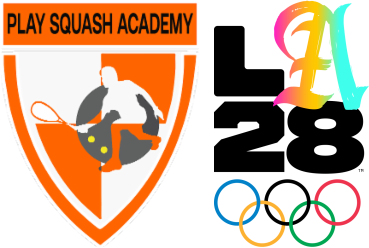Regarding racquet sports, there are numerous options available to enthusiasts. Two popular choices that often get compared are squash and racquetball. Both sports involve using a racquet and a ball, but significant differences exist. In this article, we will delve into the contrasting features of squash vs. racquetball, exploring their rules, equipment, playing styles, and more.
Squash vs. Racquetball: Rules and Gameplay
Squash and racquetball differ in their rules and gameplay, which ultimately shape the overall experience for players.
In squash, the players hit the ball against the front wall using a small rubber ball. The ball must hit above the tin and below the outline on the front wall, ensuring it reaches the front wall before bouncing twice. The objective is to make it difficult for the opponent to return the ball, aiming for strategic shots and placing it in hard-to-reach areas.
Racquetball, on the other hand, involves hitting a larger, bouncier ball against the front wall, aiming to keep the ball in play by making it bounce off the back wall. The rules are slightly more relaxed than squash, allowing for more freedom in shot selection and movement around the court. The objective is to outmaneuver the opponent by hitting the ball so that it becomes challenging to return.
Squash vs. Racquetball: Equipment
Both squash and racquetball require specific equipment for play.
Squash players typically use a smaller, heavier racquet to withstand the ball’s impact against the wall. The racquet’s size and weight contribute to precise control and maneuverability, allowing players to execute intricate shots. Additionally, squash players wear non-marking shoes that provide traction on the court while allowing for quick movements and pivoting.
In racquetball, the racquet is typically larger and lighter compared to squash. The larger sweet spot and lightweight design enable players to generate more power and deliver faster shots. Racquetball players also wear non-marking shoes, similar to squash, but the shoes may have slightly different features to accommodate the sport’s unique movement patterns.
Court and Playing Style
The court layout and playing style also set squash and racquetball apart.
A squash court is typically smaller, measuring 32 feet long and 21 feet wide, with four walls surrounding the playing area. The enclosed space requires players to be agile and nimble, as they have less room to cover than racquetball. Squash players engage in strategic rallies, utilizing angles and deception to outwit their opponents and win points.
Racquetball courts, on the other hand, are larger and measure 40 feet in length, 20 feet in width, and 20 feet in height. The additional space allows for more explosive movements and longer rallies. Racquetball players often employ powerful shots, relying on the ball’s speed and the court’s layout to gain an advantage. The open nature of the court demands quick reflexes and adaptability to respond to the ball’s unpredictable bounces off the walls.
Physical Demands and Fitness Benefits
Both squash and racquetball offer exceptional fitness benefits due to their fast-paced nature. The rigorous movement patterns and quick reflexes required in both sports enhance cardiovascular endurance, agility, and hand-eye coordination. The explosive bursts of energy and constant changes in direction during matches contribute to improved speed, balance, and overall strength.
With its smaller court and intense rallies, Squash emphasizes quick, precise movements and direction changes. The constant lunging, reaching, and sprinting involved in squash make it a demanding sport that improves muscular endurance and anaerobic fitness.
Racquetball, with its longer court and emphasis on power, requires players to generate substantial force in their shots and be prepared for extended rallies. The sport engages the entire body, with players frequently engaging their core, legs, and upper body muscles. Racquetball contributes to improved aerobic fitness, muscular strength, and power.
Conclusion
In summary, while squash and racquetball share similarities as racquet sports, they differ significantly in terms of rules, gameplay, equipment, court layout, and playing styles. With its strategic shot placement and confined space, Squash demands precision, agility, and deception from players. Racquetball, with its faster-paced rallies and explosive movements, relies on power, reflexes, and adaptability.
Whether you prefer the intricate strategy of squash or the adrenaline-fueled pace of racquetball, both sports offer tremendous physical and mental benefits. Exploring these unique racquet sports can be a rewarding experience for athletes looking to challenge themselves while enjoying the thrill of the game.
FAQs:
Can you play squash in a racquetball court?
No, squash cannot be played in a racquetball court. Squash courts have specific dimensions and wall materials that differ from racquetball courts.
What is the basic objective of both squash and racquetball?
The objective in squash and racquetball is to hit the ball against the front wall in a way that makes it difficult for the opponent to return the shot.
Are the balls used in squash and racquetball the same size?
No, the balls used in squash and racquetball differ in size. Squash balls are smaller and less bouncy, while racquetballs are larger and have more rebound.
Is the court surface similar to squash and racquetball?
The court surfaces in squash, and racquetball has some similarities and differences. Both sports use a smooth, non-slippery surface, but the walls in squash are typically made of harder materials to allow for more intricate shot-making.
Can you play both squash and racquetball with the same set of rules?
No, squash and racquetball have distinct sets of rules. While they share certain fundamental principles, such as hitting the ball against the front wall, there are specific rules and regulations unique to each sport. Understanding the rules specific to the sport you are playing is important.


Recent Comments